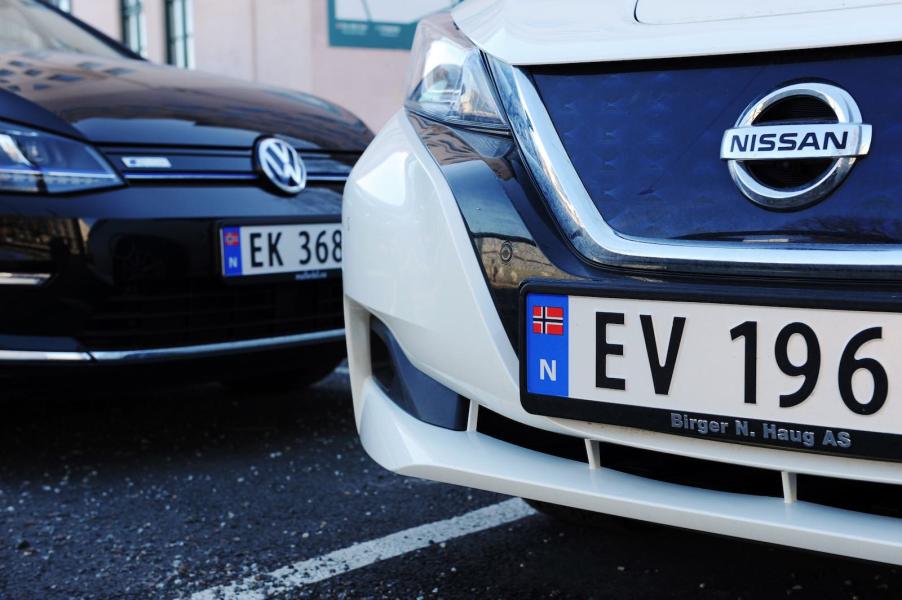
Norwegians registered 45 new gas-powered cars in July, the rest EVs
It may not be news to you that much of northern Europe is light-years ahead of the rest of the planet in EV adoption. Norway is no exception, with 91.9% of new vehicles registered last month being full EVs. The final 45 internal combustion holdouts may be a preview of our future.
Norway brags that it’s the “EV capital of the world.” And it does have more EVs per capita than any other country. Why? Well one reason is this northern country, roughly the size of Montana, has 3,000 public charging stations and 7,753 fast chargers for a population 1/3 the size of the greater NYC metro area. Another reason may be that EV drivers enjoy cheaper parking, tolls, the use of HOV lanes, and no longer pay weight-based registration fees.
Christina Bu, secretary general of the Norwegian Electric car association said, “The strongest incentive may be that we heavily tax the purchase of polluting petrol and diesel cars.”
This “carrot and a stick” approach appears to be working. In 2023, 82.38% of all cars sold in Norway were full EVs. In July 2023 specifically, 81.7% of all new vehicles registered were EVs. At the same time, 14% were hybrids or plug-in hybrids. Since then, Norway abolished the weight-based registration taxes EV owners faced.
Fast-forward to July 2024, and 91.9% of new cars registered were EVs. What’s interesting here is that as EV registrations surged, combined hybrid and PHEV registrations plummeted to 4.8%. The final 45 vehicles registered in July were pure ICE. If you break them down by make and model, they fit into three groups.
The first group of ICE holdouts is municipal/service vehicles. In Norway this July, this subset was represented by two Volvo XC90s converted to ambulances by Nilsson. I am not sure whether these municipalities needed ICE ambulances, or whether the Nilsson company doesn’t offer an EV version yet. But I expect there are other use cases (perhaps fire trucks or certain long-distance buses) where we’ll see ICE vehicles linger.
The second group is represented by 10 Suzuki Swifts. Say what? This is a “supermini” hatchback with a 1.5-liter engine (and 79 horsepower) that gets 42 mpg on the highway. Other journalists have wondered whether these were registered by die-hard Suzuki fans (the brand offers no EVs in Norway) or even leftover inventory sold at a deep discount. But I suspect they are just among the cheapest vehicles available in Norway. Some buyers need to save money, and EVs are still more expensive than ICE vehicles. But EVs won’t be more expensive for long.
The third and final group–and the vast majority of ICE vehicles registered in Norway–are sports cars and exotics. Holdouts here include six Porsche 911s, five Mazda Miatas, two BMW M2s, two BMW 1-series coupes, two different Aston Martin models, and a Maserati. There were also two custom/amateur-built one-offs registered in July.

So are these all greedy gas hogs holding out against the EV transition? I’d argue that an Aston Martin buyer probably isn’t using their six-figure exotic car to commute. Norway has obviously made daily driving an EV easy and painless, so I suspect most of these outliers are secondary vehicles. I’ve already heard enthusiasts in the U.S. say they are considering buying their dream sports car sooner rather than later, not driving it daily, and hoping to keep it around for weekend fun for years. And of course the Mazda Miata is often listed as the one to get. Seems some Norwegians have the same plan.
Is this environmentally irresponsible? That’s a matter of opinion. I will say that if 100% of commuter cars were electric, that would cut the vast majority of auto fleet emissions. A source inside the EPA has actually said the Agency has no plans to go after classics or weekend enthusiast cars after that’s accomplished. We’ll have to see what happens in Norway.
For anyone saying, “The U.S. could never do what Norway’s done,” I’d remind you that Norway is a huge country, 1,1000 miles long. And the weather isn’t ideal for EVs. Christina Bu said, “Even in the northernmost parts of Northern Norway – an area with huge distances, more reindeer than people, and really low temperatures in the winter – you can get around easily in an EV.”
Next, see CNBC’s deep dive into how Norway built an “EV Utopia” in the video embedded below:



